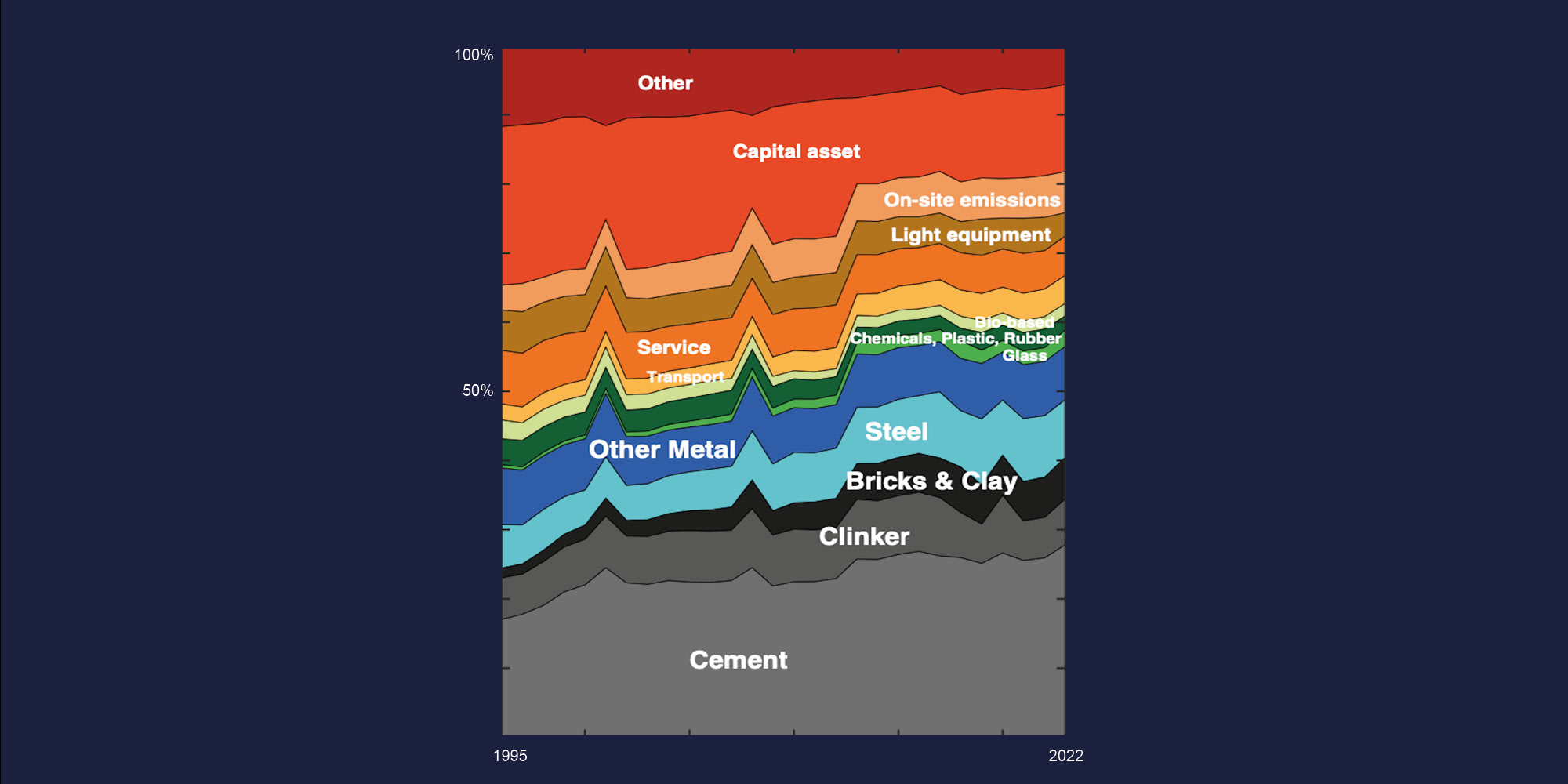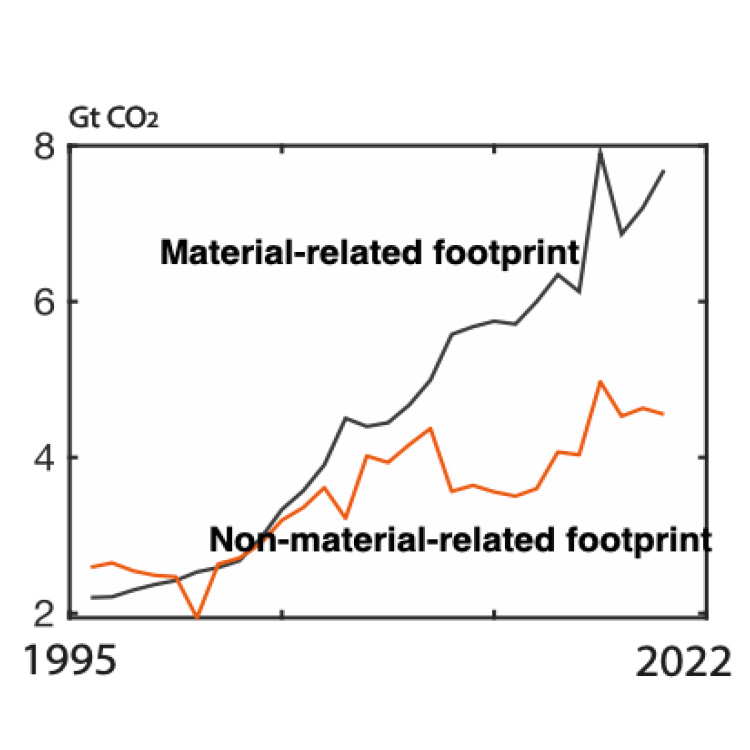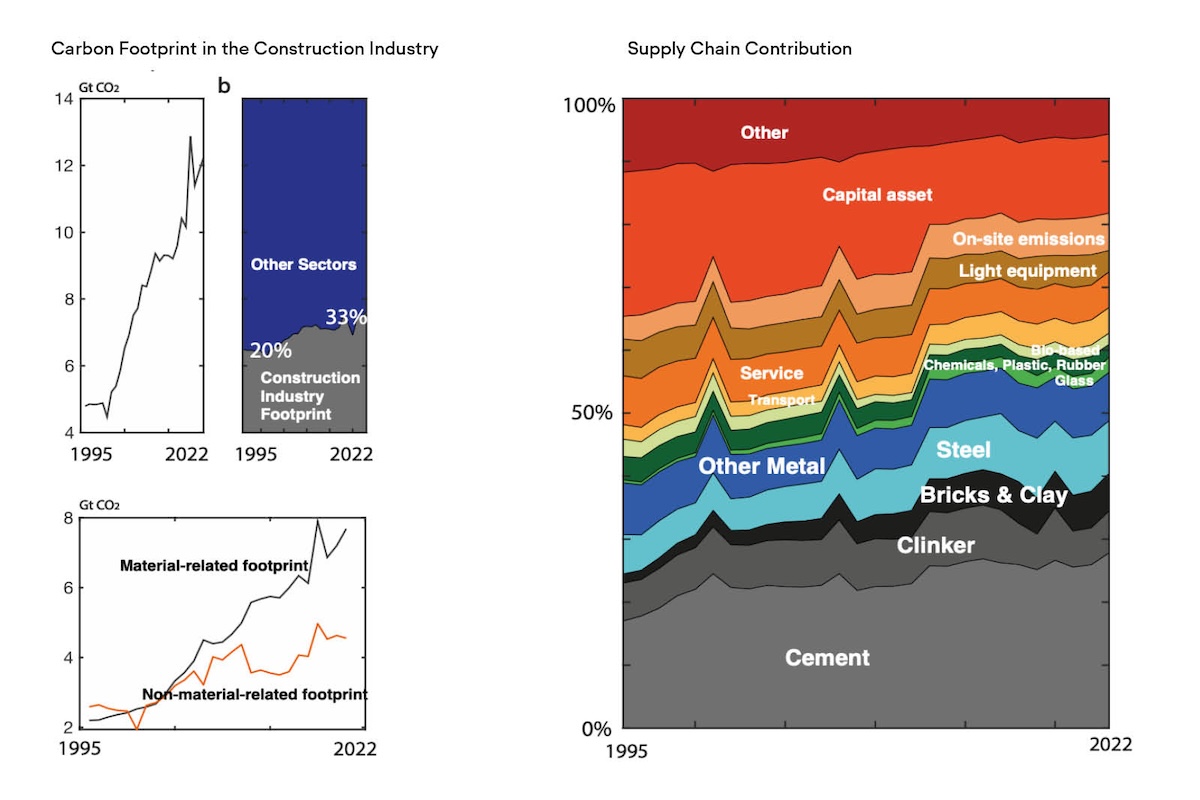
Carbon Footprint in the Construction Industry: Supply Chain Contribution 1955 – 2022 © Li, Pradhan, Chen, Kropp, Schellnhuber, 2025
All articles
Global Carbon Footprint of the Construction Sector Projected to Double by 2050: New study led by Chaohui Li (Bauhaus Earth) calls for a material revolution
Date
31/10/2025
Read time
0
minutes
A new international study, led by Chaohui Li (Peking University/Bauhaus Earth) warns that the global construction sector is set to double its carbon footprint by 2050, threatening efforts to meet the Paris Agreement climate targets. In 2022, more than 55% of construction-related emissions came from cementitious materials, bricks and metals. Glass, plastics, chemicals and bio-based materials accounted for 6 per cent, while 37 per cent resulted from transport, services, machinery and on-site activities.
“The study shows that the construction sector now drives one-third of global CO₂ emissions, up from around 20 per cent in 1995. If current trends continue, the sector can exceed the 2°C per-annum carbon budget earliest by 2040.” – Lead author Chaohui Li
The study projects several future scenarios based on historical data. Under a business-as-usual pathway, the construction sector alone will exceed the annual carbon budgets for the 1.5°C and 2°C targets within the next two decades.
“Between 2023 and 2050, cumulative construction-related emissions are expected to reach 440 gigatons of CO₂. This is enough to consume the entire remaining global carbon budget for 1.5°C” – Co-author Prajal Pradhan (University of Groningen)
The findings show a marked shift in emissions from high-income to developing regions. In 1995, high-income countries produced half of all construction emissions. By 2022, emissions in these economies had largely stabilised, while growth in developing regions increasingly relied on carbon-intensive materials such as steel and cement. At the same time, the use of bio-based materials has declined, signalling a missed opportunity for low-carbon alternatives.

Carbon Contribution in the Construction Industry © Li, Pradhan, Chen, Kropp, Schellnhuber, 2025
A call for a material transformation
The authors call for a global “material revolution” to move away from carbon-intensive building materials toward low-carbon, circular and bio-based options such as engineered timber, bamboo and recycled composites. Their analysis shows that cementitious materials, bricks and metals now account for more than half of the sector’s emissions.
“The challenges and solutions for decarbonising construction are not globally uniform. Full supply-chain transformation requires structural shifts in materials, reducing dependence on cement, steel and bricks while exploring new alternatives,” –Co-author Jürgen Kropp (Potsdam Institute for Climate Impact Research / Bauhaus Earth)
The study notes that high-income regions should lead through innovation, circular design and regulation, while developing regions – where most new construction will occur – need targeted financial and technological support to advance sustainable building practices. Without such a transformation, the construction sector alone could consume the entire remaining 1.5°C carbon budget within the next two decades. A coordinated global effort to scale low-carbon materials and redesign construction systems is essential to keep climate commitments within reach.
As urbanisation accelerates, reducing the environmental impact of construction will be central to creating sustainable and climate-resilient cities. The study provides the most comprehensive global assessment of construction emissions to date, analysing 49 countries and regions and 163 sectors between 1995 and 2022.
“Humanity has literally built itself into a corner with steel and cement. A global material revolution rooted in circularity, innovation and cooperation can turn the construction sector from a climate problem into a cornerstone of a sustainable and resilient future.” - Hans Joachim Schellnhuber (Director General IIASA / Founder Bauhaus Earth).
Reference
Li, C., Pradhan, P., Chen, G., Kropp, J., & Schellnhuber, H.J. (2025), "Carbon footprint of the construction sector is projected to double by 2050 globally."
Communications Earth and Environment
DOI: https://doi.org/10.1038/s43247-025-02840-x
"Carbon footprint of the construction sector is projected to double by 2050 globally"
Li, C., Pradhan, P., Chen, G., Kropp, J., Schellnhuber, H.J. / Communications Earth and Environment, 2025
Press Gallery
Partners

414films%20(3).jpeg)


